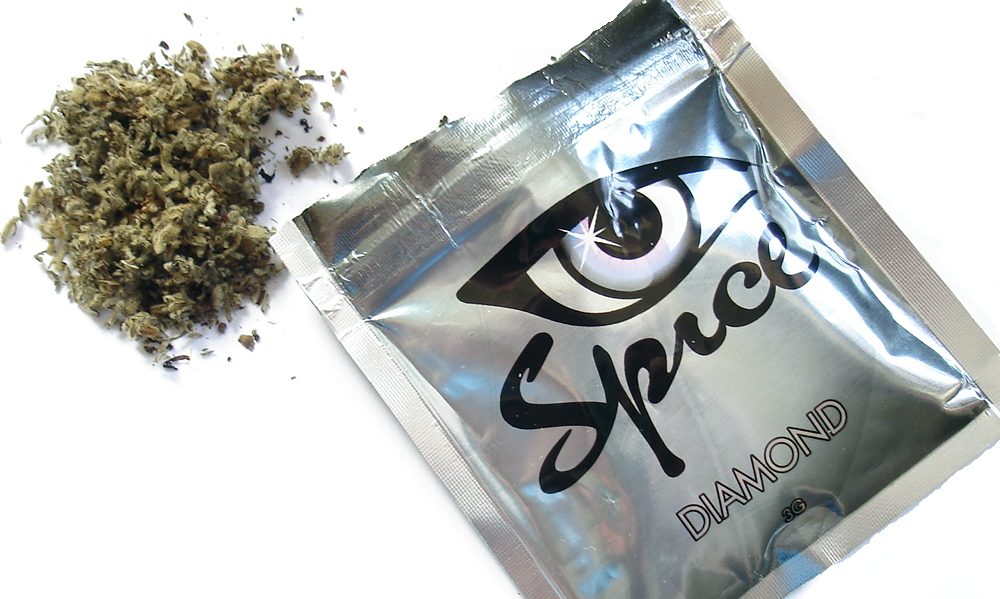Politics
Federal Drug Cops Conflate Synthetic Cannabinoids With Marijuana (Deliberately?)

“Synthetic marijuana” is a broad term that’s used by much of the media to describe plant material sprayed with any number of lab-derived chemicals. These chemicals may be intended to mimic the effect of plant-based cannabinoids on the brain; they also may not be.
The similarities end there. The products, commonly sold under brand names like K2 or Spice (or “potpourri”) at head shops, gas stations and bodegas, is known to cause serious health complications, including death.
Plant-based cannabis, which has known health benefits, has never resulted in a known fatal overdose. Natural marijuana is legal for medical or recreational use in more than half of the United States. Synthetic cannabinoid products are universally banned.
Marijuana use is easily captured by urine and blood tests. Synthetic marijuana is not detected by these tests, making it popular among prisoners, members of the military and other people for whom marijuana use is a significant risk thanks to the nation’s drug laws—which in this way perversely encourage synthetic marijuana use.
About the only similarity between so-called “synthetic marijuana” and cannabis is that people smoke it. The Drug Enforcement Administration (DEA) seems to recognize this in its official agency fact sheet.
Yet following a significant number of overdoses in New Haven, Connecticut this week—70 people are believed to have been sickened after using synthetic cannabinoid products laced with an opiate—both the DEA and a United States attorney are conveniently forgetting these salient facts, and are conflating relatively benign cannabis with incredibly harmful synthetic products.
Late Wednesday, following the New Haven overdoses, the DEA’s Los Angeles field office tweeted an ominous and falsehood-riddled warning.
“[T]his is a good time to remember that #marijuana and #synthetics are very dangerous! #marijuana is illegal in #Cali. Don’t end up locked up!”
With synthetic marijuana possibly to blame for several overdoses in New Haven, this is a good time to remember that #marijuana and #synthetics are very dangerous! #marijuana is illegal in #Cali. Don’t end up locked up! #JustSayNo to #pot #drugwar
— DEALosAngeles (@DEALOSANGELES) August 16, 2018
In California, marijuana has been legal for all adults 21 and over to consume, possess and cultivate since Election Night 2016. It is also not clear what qualifies marijuana as “dangerous.”
Around the same time, Mike Stuart, the U.S. Attorney for the Southern District of West Virginia, also chose to chime in. West Virginia has the highest rate of opiate overdose deaths of any state in the country. Stuart, too, managed to squeeze several alternative facts into a single tweet.
Synthetic pot mass overdose in CT. Earlier this year in Chicago, dozens died. Synthetic pot EXTREMELY dangerous. Wash Post says marijuana can be addictive. Marijuana is dangerous & a dangerous gateway (first step) to other dangerous illicit drugs. https://t.co/2klcww5WFT
— US Attorney Mike Stuart (@USAttyStuart) August 16, 2018
Most research has debunked “gateway theory.” Even the federal National Institute on Drug Abuse notes that “the majority of people who use marijuana do not go on to use other, ‘harder’ substances.” It is not clear what data Stuart is using to claim that marijuana is either dangerous or a dangerous gateway—whatever it is, it’s data researchers do not have.
Stuart also severely misrepresented the severity of an synthetic cannabinoid “outbreak” in Chicago.
According to the Chicago Sun Times, as of the beginning of August, two people were known to have died after using synthetic products laced with a rat poison over the past six months. Media reports available a week later put the total number of people killed in the United States by related products in 2018 at around a dozen. Either way, this is far fewer than the “dozens” Stuart claims to have been killed by the substance.
At any rate, as per the Cook County medical examiner, it was the rat poison in the synthetic cannabinoid preparations that killed them—not anything remotely related to a cannabinoid.
The nation’s drug police are not alone in confusing marijuana with so-called “synthetic marijuana.” A headline posted earlier this summer by the Associated Press, the country’s leading wire service that provides content to thousands of news outlets coast-to-coast, recently claimed that six Florida prison inmates were sickened by smuggled “marijuana”—failing to recognize that the supposedly marijuana-like product was synthetic.
This is completely unacceptable, @APStylebook @AP
You just acted like authorities on cannabis journalism term usage by hosting an #APStyleChat this afternoon and now you’re pushing a header that refers to synthetic cannabinoids as just “marijuana.”
DELETE YOUR WIRE SERVICE pic.twitter.com/Q5tknmMdTr
— Tom Angell 🌳📰 (@tomangell) June 13, 2018
Aside from the mix-up of calling clearly synthetic products just plain “marijuana,” advocates have raised concerns that the term “synthetic marijuana” itself is dangerously misleading. They say that it sends the message that the products are chemically similar or identical to natural cannabis, just synthetically derived. That is not the case.
The AP’s error could be explained by ignorance or negligence. But Stuart and the DEA are supposed to be subject-matter experts when it comes to drugs. For the Justice Department and the nation’s drug enforcement agency to deliberately share “alternative facts,” especially at a time when a significant majority of Americans recognize that marijuana is less harmful than many legal substances like alcohol and tobacco, is a troubling development.
Photo courtesy of U.S. Air Force.




